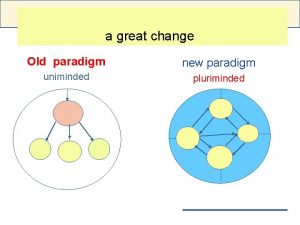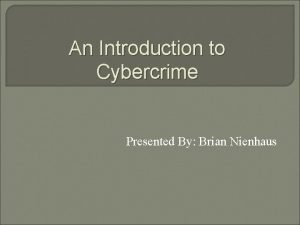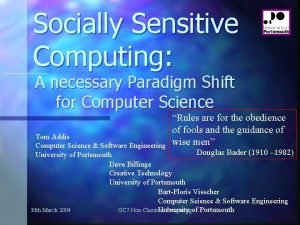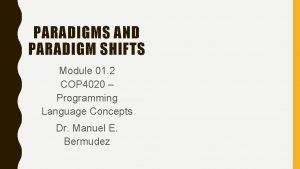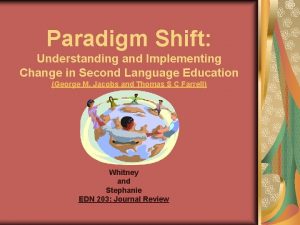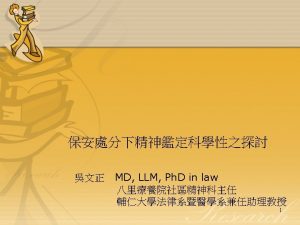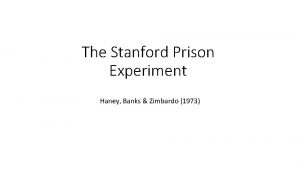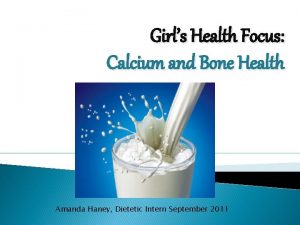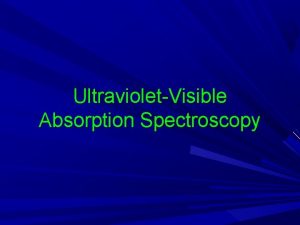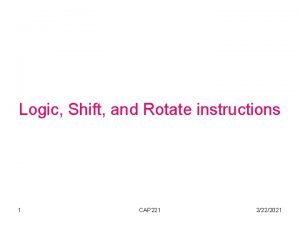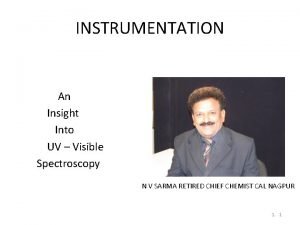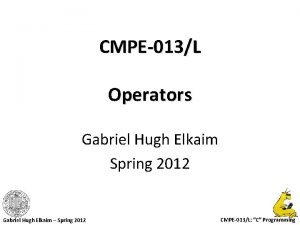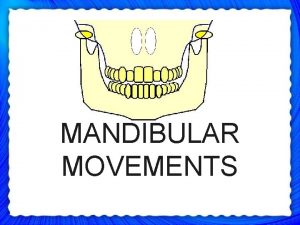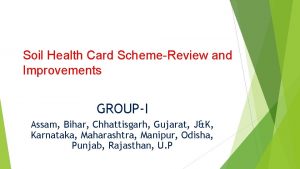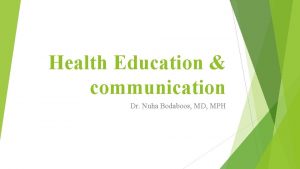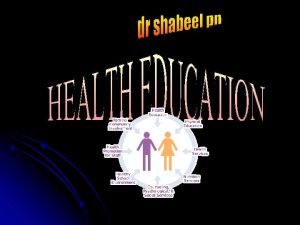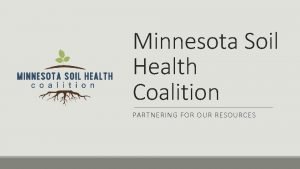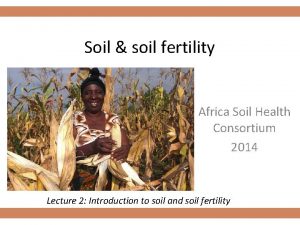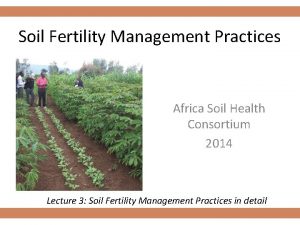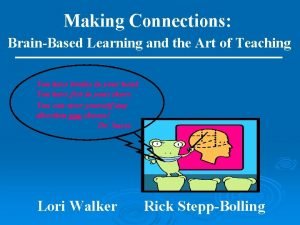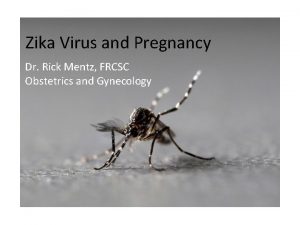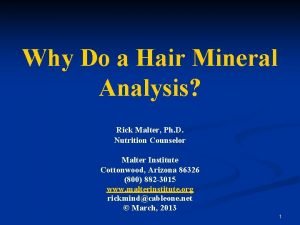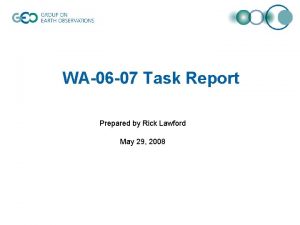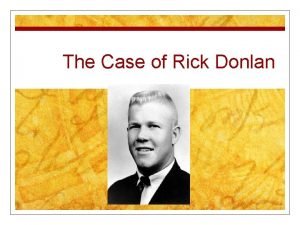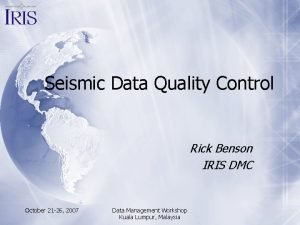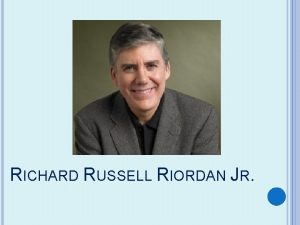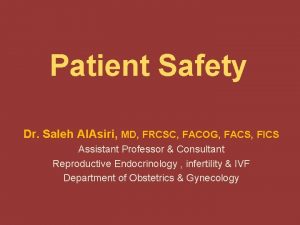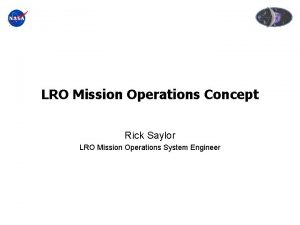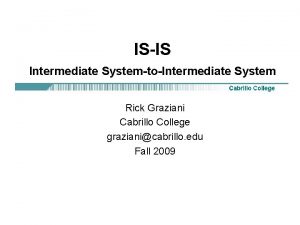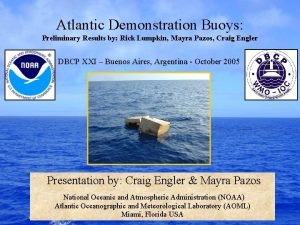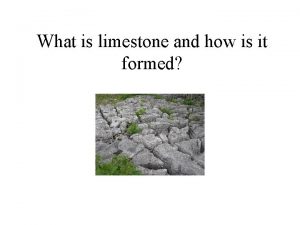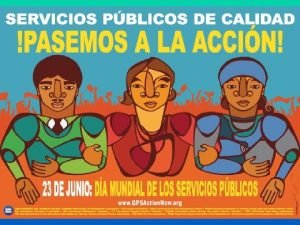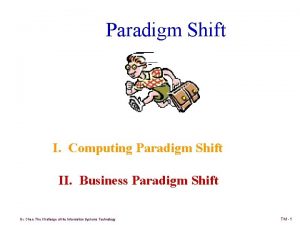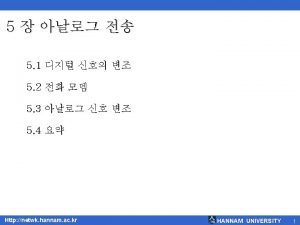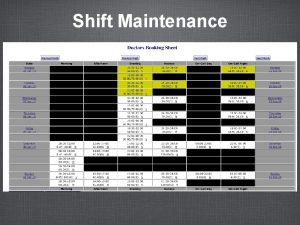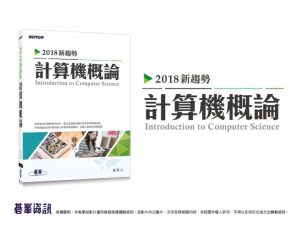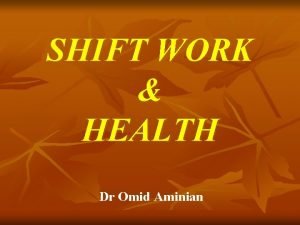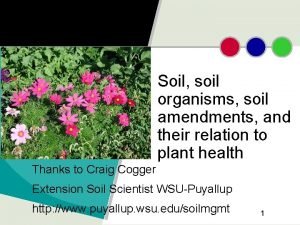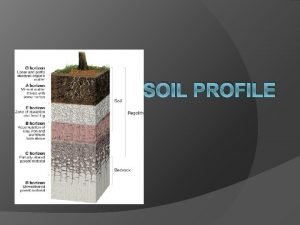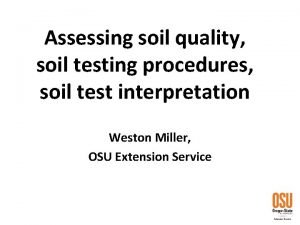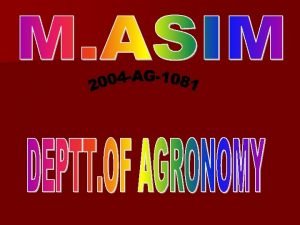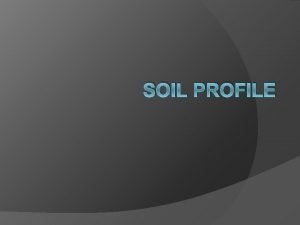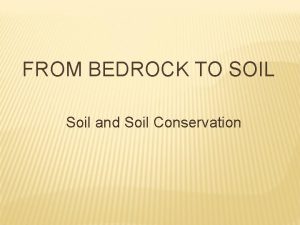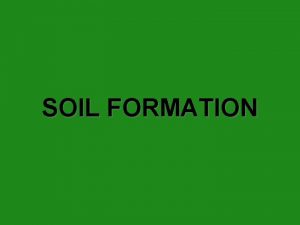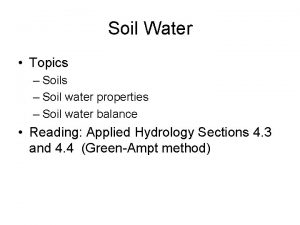Soil Health Paradigm Shift Rick Haney Ph D

















































































- Slides: 81

Soil Health Paradigm Shift Rick Haney Ph. D, USDA-ARS, Temple, TX






The Home Place

Natures Way • • • Grows a skin for living systems Cycles nutrients Diverse, no monoculture Seeks balance Sustainable

How we do it • • • Strip off the soil’s skin Destroy organic matter Increase erosion Increase inputs Waste water

When you go to the bank, do you throw your money at the window and hope some goes in or do you make it so you can deposit it all. So why do we do this with rainfall and our fields? We have to deposit all the water in our soil account.

Illinois Fertilizer and Chemical Association Data

http: //ifca. com/nrate_map/

http: //ifca. com/nrate_map/



Soil Test Calibration

20 lbs available then add 200 30 lbs available then add 170 40 lbs available then add 150 50 lbs available then add 110 >50 lbs available then add 0 ? ?

Corn Yield

Produce more get less model

150 years of Wheat Prices

Example: Yield Goal of 200 bushel corn Soil 1 Soil 2 Nitrate nitrogen 20 lbs N recommendation 180 lbs N recommendation 100 lbs Soil health score 26. 0 Soil health Score 8. 0

Fertilizer and Trucks

Dead Zone in Gulf: 8500 square miles in 2019

Paradigm shift

How it’s tested: Soil NPK As a non-living nonintegrated system Focus on physical and chemical Ignore the biological Extract soil with chemistry that soil never sees Measure the house and not the food

Soil Testing We are trying to mimic how the soil responds after rainfall in the field, not how it responds to 30 -60 year old lab methods.

Soil Health Tool Measure soil health by asking our soil the following questions: • What is your condition? • Are you in balance? • What can we do to help?

Soil bacteria and fungi

An Incredibly Dynamic Living System • Soil microbes require organic carbon compounds for growth and energy • Soil microbes take in O 2 and release CO 2 • This CO 2 release is coupled with energy production, nutrient cycling and microbial growth Soil microorganisms have been in R&D for millions of years.

Nutrient Cycle

The majority of nutrient cycling is due to the drying/rewetting effect Soil drying and rewetting Laboratory analysis does not account for this process Plants turn greener after it rains due to the release of N and P, not just the water

Soil Health Methods The SHNT is geared towards soil microbial activity and the readily available substrate that they act upon. In other words, we assess the soil as a living system, using many measurements of health viewed collectively to attain an overall picture of soil vigor. The measurements include: • • Water extractable organic C (WEOC) Water extractable nitrogen (WEN) Water extractable organic N (WEON) C: N ratio of the two Soil microbial respiration Inorganic N and P and K H 3 A extractable Al, Fe, K, Ca, and P. Mineralized C, N and P Organic Carbon Nitrogen Phosphate Soil Microbes

Soil Health Integration Organic C Soil respiration % MAC Soil Health Calculation Organic N: P Organic C: N Organic N Inorganic N, P

Soil Organic Matter is the “House” microbes live in, Water Extractable Organic Carbon is the “Food” they eat. 2% SOM, 12, 000 ppm C House Food 100 -1000 ppm C from water extract = microbial food

Soil Organic C (%OM) 6. 4 % 5. 96 % 4. 6 % 3. 0 % Maine Wyoming Alfalfa Native 1. 0 % Idaho Texas

Soil Organic C (water extract) 6. 4 % Maine 5. 96 % 4. 6 % Wyoming Alfalfa Native 3. 0 % Idaho 1. 0 % Texas

Soil Microbial Activity

Soil Extraction H 3 A and Water What does the plant root really see? • WATER and a complex mixture of plant root exudates along with microbial derived enzymes and nutrients • The root system flows with elegance and complexity • We extract soil with highly disruptive acidic or alkali solutions and call it “plant available”

Liquid Sun About 20% of the carbon fixed by the plant (photosynthesis) is exuded from the roots into the soil environment.

Phosphate • Current labs 1. ICP P or PO 4 -P using 7 different extractants • Soil Health 1. ICP P 2. PO 4 -P 3. H 3 A (mimics plant root exudates) 4. Soil respiration 5. Org C: N 6. P min 7. % water P/ H 3 A P 8. % P/ Fe. Al 9. Ca/Fe. Al

Nitrogen • Current labs • Soil Health Tool 1. NO 3 -N 2. 2 M KCl (1965) 3. None 1. 2. 3. 4. 5. 6. 7. 8. 9. NH 4 -N NO 3 -N WETN Soil respiration Org N Org C: N MAC WEON N min Water

Since 1965* we have been missing half of the N *2 M KCl 1965 Bremer How can we “calibrate” a soil test when we miss half of what we are looking for?

NO 3 -N

Plant available N




Cover Crops

Plants fix dirt and make Soil


Give good feed to the soil Life, it will return good soil to you

Capture Sunlight to Provide Energy for Soil Life

Which Field Captures Solar Energy?

Sunflower Roots


Sorghum Roots



What can we do? • Put the skin back on the soil using no-till and mixed species cover crops, which will decrease erosion and inputs • Be innovative and tenacious Cover Crops Increase Organic Matter Increase Water Conservation Increase Nutrient Cycling

Innovation: Cover crop planting in 30 inch rows

Innovation for soil respiration

Working with the Nature • Why mimic nature? • It has been doing R&D much, much longer than us • It fills niches • It creates balance • It recycles nutrients • It conserves water • It is tenacious

Plant the cover crops No-till or Conventionaltill? You don’t need any test or research to tell you how to help your soil Nature has been showing us the way all along It is hard to stay excited about research or farming without innovation

Nature finds a way

The End

Contact Rick Haney Soil Scientist USDA – ARS Grassland, Soil & Water Research Laboratory 808 E. Blackland Road Temple, TX 76502 (254) 770 -6503 rick. haney@usda. gov

Left: Diatoms circa 1850. Right: Atomic Force Microscopy image of a nanographene molecule, the resolution is so high that for the first time, we can see the individual bonds between atoms, shown here as green lines.

Paradigm shift

Field Research My Conventional-till research field

My No-till research field



Soil Respiration Nitrogen Root Excretions Organic Root Excretions Legumes as Source of N • Stoklasa 1905, Lundergardh 19 24, Jensen 1934, Lees 1949, Makarov 1953, Bunt and Rovina 1955 • Lyon and Wilson 1928, N excretions decrease with age of corn plant • Dyer 1894, Lemmerman 1907, Künze 1906, Schreiner and Reed 1907, Doyarenko 1909 • Lipman 1912, cereals, oats and barley

Starkey (1929, 1934) showed that the roots of plants have a considerable influence on the accumulation of microorganisms in the soil Rhizosphere of beets, (427 million bacteria per gram) Control soil (only 8. 2 million per gram) In clover, he found 932 million per g and in the control soil only 6. 6 million per g In the rhizosphere of wheat, 653. 4 million per g were found; and in the control soil, only 22. 8 million bacteria per g

Research History - 1994

Research History 1995 • 1995: Haney’s first attempt at publishing using a technique involving drying and rewetting soil and recording the flush of CO 2 in 1 day to estimate N mineralization is rejected (finally published in 2000). • It’s deemed “too simplistic” by reviewers in spite of the data presented. • Haney becomes emotionally disturbed.

1996: CO 2 vs. 30 day CO 2


Soil Organic C vs. Water Extractable Organic C A soil with 2 % soil organic matter (SOM) would have 12, 000 ppm C. When we analyze the water extract from the same soil, that number could be from 100 -300 ppm C. The organic C in the soil water extract reflects the carbon in your soil that is highly related to the microbial activity. % SOM is about the quantity of organic C, water extractable organic C is about quality.

Soil Respiration and Nitrogen 1 day CO 2 -C of 50 ppm WEON of 40 ppm WEOC 400 ppm Calculation 50/400=0. 125*40=5 5*4 (rainfall events)=20 ppm 20*2 (0 -6 inch sample)=40 lbs N 1 day CO 2 -C of 80 ppm Calculation 60/400=0. 2*40=8 ppm 8*4(rainfall event)=32 ppm 32*2=64 l bs N 1 day CO 2 -C of 300 ppm Calculation 300/400=0. 75*40=30 ppm 30*4 (rainfall event)= 120 ppm 120*2=240 lbs N BUT, we only measured 40 ppm WEON or 80 lbs of N Therefore we will never credit more N from the WEON pool than we measure AND whether the credit is 80 lbs, or 40 lbs, this is nitrogen we would have missed if we just measured nitrate

Soil Nitrogen Soil-water Total N (Pool 1) Soil-water inorganic N (Pool 2) Soil-water organic N (Pool 3) Organic N % of total N in each pool (organic and inorganic)
 Rick haney soil test
Rick haney soil test Old paradigm
Old paradigm Paradigm shift from women studies to gender studies
Paradigm shift from women studies to gender studies Paradigm shift from pedagogy to andragogy to heutagogy ppt
Paradigm shift from pedagogy to andragogy to heutagogy ppt Brian nienhaus
Brian nienhaus Initiative progressive era definition
Initiative progressive era definition Paradigm shift in technology
Paradigm shift in technology Paradigm shift teacher-centered to student-centered
Paradigm shift teacher-centered to student-centered Paradigm shift in technology
Paradigm shift in technology Paradigm shift meaning
Paradigm shift meaning Paradigm examples
Paradigm examples Paradigm shift in education
Paradigm shift in education Paradigm shift in education
Paradigm shift in education Paradigm shift kuhn
Paradigm shift kuhn Haney banks and zimbardo
Haney banks and zimbardo Haney banks and zimbardo
Haney banks and zimbardo Dr fatma haney
Dr fatma haney Auxocromo
Auxocromo Bathochromic shift and hypsochromic shift
Bathochromic shift and hypsochromic shift Difference between arithmetic shift and logical shift
Difference between arithmetic shift and logical shift Bathochromic shift and hypsochromic shift
Bathochromic shift and hypsochromic shift Difference between arithmetic shift and logical shift
Difference between arithmetic shift and logical shift Verilog
Verilog Gabriel hugh elkaim
Gabriel hugh elkaim Difference between arithmetic shift and logical shift
Difference between arithmetic shift and logical shift Sagittal plane border movement
Sagittal plane border movement Living soil vs dead soil
Living soil vs dead soil Convergent plate boundaries
Convergent plate boundaries Soil health card assam
Soil health card assam Soil seed and sower in health education
Soil seed and sower in health education Soil seed sower in health education
Soil seed sower in health education 2 causes of land pollution
2 causes of land pollution Soil health
Soil health Minnesota soil health coalition
Minnesota soil health coalition Africa soil health consortium
Africa soil health consortium Agronomic measures of soil and water conservation
Agronomic measures of soil and water conservation Dr rick griffith
Dr rick griffith Rick lawford
Rick lawford John 21 1-3
John 21 1-3 When was rick riordan born
When was rick riordan born God rick der verpflanzte
God rick der verpflanzte Rick trebino lectures
Rick trebino lectures Dynamodb sql injection
Dynamodb sql injection Rick cruz hisd
Rick cruz hisd Rick stepp san antonio
Rick stepp san antonio Jodi baker faa
Jodi baker faa Dr rick griffith
Dr rick griffith My lan graziani
My lan graziani Dr rick griffith
Dr rick griffith Dr rick mentz
Dr rick mentz Rick malter
Rick malter Paulsen
Paulsen Rick lawford
Rick lawford Dr rick griffith
Dr rick griffith Rick donlan
Rick donlan Rick bhugtana
Rick bhugtana Rick benson iris
Rick benson iris Seismic quality control
Seismic quality control Richard russell riordan jr
Richard russell riordan jr Rick strohmaier contact info
Rick strohmaier contact info Dr rick mentz
Dr rick mentz Rick warren class 201 pdf
Rick warren class 201 pdf Rick saylor
Rick saylor Rick bhugtana
Rick bhugtana Rick graziani
Rick graziani Dr rick griffith
Dr rick griffith Rick evers
Rick evers Dr rick griffith
Dr rick griffith Rick antle yale
Rick antle yale Rick kenney md
Rick kenney md Rick haverkort
Rick haverkort Dr rick griffith
Dr rick griffith Prison break genre
Prison break genre Rick lumpkin
Rick lumpkin Rick kuntz
Rick kuntz Griffith
Griffith Limestone pavement formation
Limestone pavement formation Rick wise stifel
Rick wise stifel Rick lawford
Rick lawford Robinhood nlu
Robinhood nlu Hampter origin
Hampter origin Rick bernier
Rick bernier

